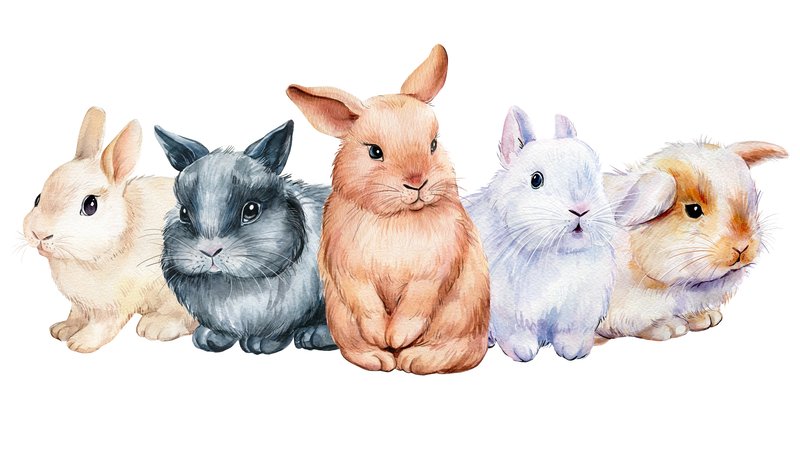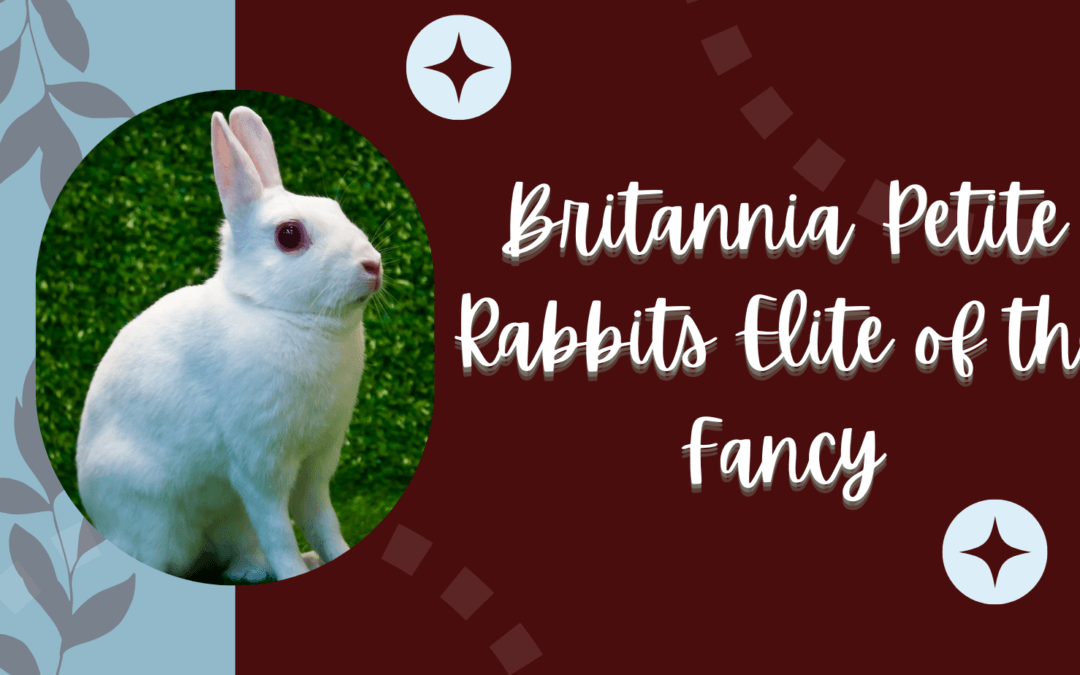Britannia Petite rabbits are small breeds known for their sleek and stylish appearance. However, owning them can be challenging for first-time rabbit owners. Compared to other rabbit breeds, they are more high-strung and aggressive. Also, their delicate bones require owners that can handle them correctly. Is Britannia Petite the right fit for you? Read to learn more!
Facts about Britannia Petite Rabbits
| Body Size | Dwarf |
| Body Weight | 2 lbs to 2.5 lbs |
| Body Shape | Full arch |
| Lifespan | 6 to 10 years |
| Colors | REW, BEW, broken, chestnut agouti, black, sable, and black otter |
| Similar Breeds | Netherland Dwarf, Polish rabbit |
| Best Suited for | Experienced owners living in apartments |
| Origin | England |
Background and History
One of the very old breeds, the Britannia Petite evolved from the Polish rabbits. This breed originated in England in the 1800s. Because of their size and fur quality, they were popular as rabbit shows. Polish rabbits were descendants of wild rabbits like the Dutch and the Silvers.
In the early 1900s, the United States imported Polish rabbits. There were already bunnies called Polish rabbit, so they decided to name it Britannia Petite, a breed closely related to the Polish rabbit breed. Through selective breeding, the Brits had a rounded cobby body. It differed from the Polish rabbits in England, which had hare-like structures.
ARBA accepted the breed in 1977 with the help of Warren and Wendy Porcha. However, the association only recognized the Ruby-eyed white (REW) variety. It was one of the smallest breeds acknowledged by ARBA. In consecutive years, other types appeared through the efforts of Rene Goedderz.
These varieties included BEW, broken, sable marten, chestnut agouti, black, and black otter. Because of being sleek and stylish, the Britannia Petite earned the title “Elite of the Fancy”. There was a time that these bunnies were on the brink of extinction. Thanks to the breeders who gave their efforts to save them.
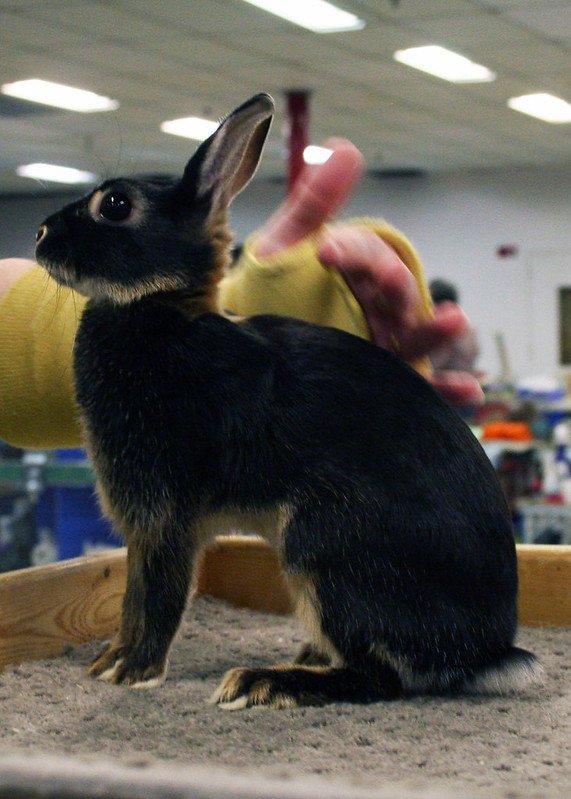
Features of the Britannia Petite
Many breeders mistook the Britannia Petites as Netherland Dwarfs. It is because of the similarities in their appearance. However, the Brits are larger than the Netherland Dwarfs. Aside from that, they have wedge-shaped heads, while the latter have round heads. They also differ in terms of coat quality.
Britannia Petite rabbits have fully arched bodies. The arch starts at the neck, continuing to the base of the tail. Their wedge-shaped heads have huge eyes and full cheeks. Also, they have small, pointed ears, erecting upright on their heads. The maximum weight of these bunnies is only 2.5 lbs. They attain their ideal weight once they reach six months.
Because of the Brits’ short, soft flyback fur, they are easy to maintain and groom. Their coats are also available in different colors. These are the REW, BEW, broken, chestnut agouti, black, sable, and black otter. Long and thin furs are considered faults on rabbit shows. On the other hand, Brits with a rollback coat are disqualified.
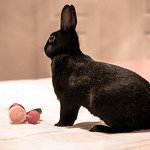
Temperament and Behavior
Out of all the rabbit breeds, the Britannia Petite is one of the most high-strung breeds. Because of their delicate bodies, they require experienced rabbit owners to hold them. They also show confidence and sometimes aggression, so they are not ideal pets for kids. These bunnies also don’t like cuddling and snuggling.
Despite their sizes, the Brits are active breeds. You will rarely see them sitting and lying in one corner. Most of the time, they are doing something, either hopping or chewing. Since they are very energetic, they need a lot of time outside their hutches to play and exercise. Providing them with toys is also vital.
Unfortunately, training the Britannia Petite rabbits is difficult. It is challenging for them to sit still, listen, and obey their owners. However, you can still try, but you have to be patient. If you are letting your Brit stay with you inside your home, ensure to make it rabbit-proof. These adorable bunnies are curious. Thus, they might chew some valuables.
The Brits don’t need large spaces because of their small sizes. They can live with experienced owners who stay in apartments. If not treated properly, these rabbits may show aggression towards people. They can bite when they feel so upset. Due to their behavior, the Britannia Petites need owners who will understand them.
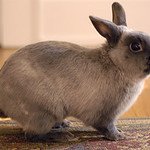
Grooming Britannia Petite Rabbits
As mentioned, the coats of the Britannia Petite rabbits are soft and short. Thus, they only need a little grooming. You can brush their furs using a slicker brush at least once or twice weekly. However, you must groom them more often if they are in molting seasons. It is to prevent them from ingesting their furs while they are self-grooming.
Your Britannia Petite may get dirty once in a while because of its energetic personality. But you should never bathe it since it may suffer from shock or stress. If there are dirty spots on its coat, get a damp towel and gently wipe it to the soiled area. For rabbit shows, you can make the bunny’s coat gloss by applying a shampoo recommended by the vet.
Besides the fur, you must also trim the nails of your pet. It may be challenging since these bunnies don’t like to be held. You can bring your pet to a groomer if you cannot do it. However, you can try calming the bunny by putting a soft towel on its body. Getting a partner who can hold your pet is highly recommended to prevent injuring your bunny.
Tiny bunnies are prone to malocclusion due to their short heads and long jaws. To prevent the overgrowth of your pet’s teeth, provide it with hay regularly, trimming its teeth. You can also offer it with chew toys and twigs to keep its teeth healthy and strong.

Proper Diet
For a bunny to stay healthy and robust, it needs a proper diet. Britannia Petites are like other rabbit breeds that need 70 to 80% hay in their diet. Fibers like hay contribute to the digestion of bunnies by improving the gut’s motility. Without enough fiber, your pet may suffer from digestion problems like diarrhea.
You can also add leafy greens to your bunny’s diet since they are rich in vitamins and minerals. But due to the sensitive guts of rabbits, you must be careful in feeding them leafy greens. You can give your furry pet parsley, cilantro, bok choy, and carrot tops. Never give it veggies like iceberg lettuce and rhubarb since they are toxic to rabbits.
Aside from veggies, you can also give fruits as treats to your rabbit. However, it must be in tiny amounts only. Fruits with high sugar can cause an imbalance in your pet’s gut, leading to different illnesses. As much as possible, only feed fruits occasionally. Berries, grapes, and apples without seeds are some fruits you can give to your pet.
As energetic breeds, Britannia Petites need a lot of water every day. It helps in keeping them hydrated and regulates their body temperature. You can use a water bottle to prevent the rabbit from getting wet. Also, ensure that the water supply is clean and new. Fill the water bottle every day.
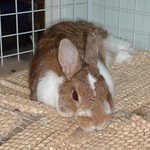
Habitat
Britannia Petite rabbits don’t require large spaces since they are small. However, the cage must give them enough room to run and hop around. The ideal cage size for dwarfs like Brits is 24” wide x 24” high x 36” long. Ensure that the floor is not slippery to prevent your pet from having bone fractures.
If you plan to place the cage outdoors, you must place it where you can easily monitor your pet. Also, it must be in an area with enough shade, protecting your bunny from direct sunlight. The surroundings must also be free from loud noises. It is to prevent the Brits from getting frightened. Outdoor cages must also be sturdy enough to withstand harsh weather and predators.
Letting your Brit stay with you indoors is also a good idea since it won’t take up a lot of space inside your room. But you should keep your home rabbit-proof to prevent accidents and injuries. Hide all the cables in your home. Also, you must keep away all the hazardous elements, such as houseplants and chemicals.
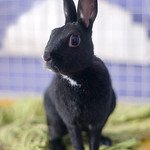
Health Issues of Britannia Petite Rabbits
Overgrown teeth
One of the common health issues among small breeds is overgrown teeth. Aside from the bone structures, it can also be caused by the lack of fiber in the rabbit’s diet. Rabbits with overgrown teeth are observed drooling, losing weight, and grinding their teeth. They may also have weepy eyes, appetite loss, and runny noses.
If the condition is manageable, the vet may only prescribe the proper diet and provide chew toys to your pet. However, he may also have to trim the incisors of your bunny. For severe cases, surgery may be needed to perform.
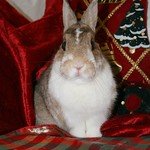
Flystrike
Flystrike is a condition wherein the flies lay eggs on the damp areas of your bunny’s body. It usually occurs during summer, but also possible to happen anytime. This condition typically infests bunnies with dirty bottoms and wounds. Signs of flystrike include the presence of maggots under the skin and appetite loss.
Bunnies with flystrike are treated by clipping away the fur. The vet will remove the maggots in their bodies. However, if the larvae already have most of the rabbit’s body, euthanasia may be recommended. To prevent flystrike, always keep your bunny clean, including its cage. Also, provide a healthy diet to prevent it from having a dirty bottom.
Frequently Asked Questions
Is a Britannia Petite rabbit a good pet for first-time owners?
Unfortunately, the Britannia Petite rabbit is not always suitable for first-time owners. It is because they are shy, high-strung and can be aggressive if frustrated. This bunny also needs careful handling due to its delicate bones. You might consider another beautiful rabbit breed such as the Harlequin Rabbit.
Do Britannia Petite rabbits love to be cuddled?
Although there are some exceptions, Britannia Petite bunnies don’t like to be cuddled since they don’t want to sit and stay in one place. They would rather play and hop around than snuggle with their owners.
Britannia Petite- pretty name for beautiful bunny!
Britannia Petite rabbits are stars of rabbit shows because of their gorgeous appearance. However, they are not ideal pets for kids and first-time owners. Although small, they need attention and understanding due to their high-strung behavior. Also, these bunnies require proper handling due to their delicate bodies.
Read More
